From Healing scars, to Breast reconstructions, to Brazilian butt lifts, fat grafting (also referred to as fat injection or fat transfer) is an exciting new frontier in plastic surgery and regenerative medicine.
Plastic surgeons have been performing Fat grafting surgeries for over a hundred years, but ground-breaking strides have been made over the past decade that have adipose stem cells (stem cells from your own fat) front and center in the news (Wired Magazine, Science Daily) and in the minds of patients.
Patients interested in having a procedure involving fat grafting should be familiar enough with the process to ask questions above and beyond the usual questions they might ask when consulting with Plastic Surgeons. The success of fat grafting is highly dependent on the skill and technique of the surgeon as well as the patient’s attention to detail and instructions during post-op.
Here are 10 questions to arm yourself with prior to a consultation for any plastic surgery involving a fat transfer:
1) Are you board certified?
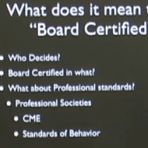
The gold standard for Board certification in the US is the American Board of Medical Specialties (ABMS). The ABMS is composed of 24 medical boards. Each of these 24 Medical Boards issue Board certification in medical specialties and subspecialties. Each medical board sets standards of care for their respective medical specialty and subspecialty.
There are only two medical specialties that are doing Fat Grafting which are recognized by the ABMS. These medical specialties are Plastic surgery and Dermatology. The Board Certification certificate that hangs in your surgeon’s office would display either: American Board of Plastic Surgery or American Board of Dermatology.
Outside of these two ABMS approved specialties, the American Board of Facial Plastic and Reconstructive Surgery also supervises residency programs where fat grafting is taught.
Check your surgeon’s credentials and be sure that your surgeon is Board Certified by one of these three Medical Boards. (Learn more about Board certification)
2) How do you process the fat?
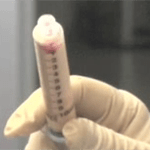
The purpose of this question is not to get a yes or no answer, but to get an idea of how much thought the surgeon has given to the process, as fat grafting is highly process dependent.
If the surgeon says he does not process the fat, or gives a very short answer, listen politely and start thinking which doctor you are going to be seeing next.
3) What vacuum pressure do you use for fat removal?
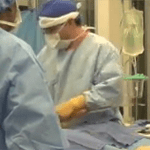
The first step of fat grafting is the extraction of the fat by Liposuction. The surgeon controls the extraction pressure of the fat removal and he should know what it is. If the doctor draws a blank to this question it’s not a good sign. Low extraction pressures are best to get healthy, viable, fat cells. An ideal range is 400 millimeters (400mm) of mercury, or half atmospheric pressure.
If the doctor says he doesn’t know because he uses a syringe, that is also not a good answer. Syringe pressure can be measured and you can read my publication in PubMed which describes how to know what pressure you are using with any syringe extraction.
4) What size cannula do you use for Liposuction?
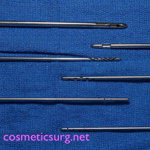
The cannula is the long slender piece of equipment used to extract the fat during liposuction. Even if the doctor does not have a cannula handy, he should be able to tell you the diameter of the cannula and what types of holes it has.
Ideally, the cannula should have a 3 millimeter (3mm) diameter because it will ensure the smoothest possible result in the liposuction area. Big cannula diameters ( 4-5 mm) are more likely to leave uneven lumps and bumps. I usually have several different sizes of cannulas in hand to show patients what this surgical instrument looks like. (Learn more about cannulas)
5) Do you wash the fat or centrifuge it?
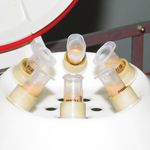
This is a complicated subject which involves many variables, and right now there is not an official consensus. However, a surgeon who goes into great detail explaining why he chose his method is probably very meticulous with his process and has thought a lot about the issue. A surgeon who gives a very definitive short answer or is dismissive of the other ways is probably not well informed.
I have always preferred centrifugation, but recognize that washing done a certain way can be effective.
6) What cannula do you use to reinject the fat?
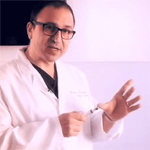
The cannula used to reinject the fat should be 2 millimeter (2mm) diameter or less. The reason is that a bigger cannula will deposit chunks of fat that are too big to be absorbed properly by the body, resulting in an uneven or lumpy fat graft.
In addition, the surgeon’s cannula should have a treated lumen on the inner surface because smooth surfaces help the good fat cells avoid mechanical damage.
7) What are the fat graft post op instructions?

During the postoperative period, the idea is not to put pressure on the fat grafts as this can cause partial reabsorption of the graft. Your surgeon’s post operative instructions should include certain basics like not sleeping on the grafted area for at least 2 weeks.
My personal recommendation to my fat transfer patients is to not sleep on the grafted area for 3 weeks.
8) Can you give me references of 2 patients who had this procedure?

The reason for 2 names is that anybody can produce one loyal patient. You need consistency of results, good rapport with your patients, and a certain number of cases to be able to give multiple references.
Understandably, not all patients allow plastic surgeons to give out their names and contact information for reference. Be appreciative of the ones who do by letting them know how much it has helped you in your decision making process.
9) How many fat injection procedures to this body area have you performed?

While many surgeons have performed some type of fat grafting, be sure to understand whether your surgeon has expertise with fat grafting in the particular area of the body you’re interested in.
For example, if you’re interested in a Brazilian butt lift, be sure your surgeon is experienced in that specific procedure.
10) What percentage of patients require touch ups or revisions?

Fat grafting to the buttocks, face, and hands should be a one-session surgery. You should expect the touch up rate to be no greater than 5-10%. Ask the surgeon what his touch rate is. If he has no idea, that is also not a good sign.
With fat injection to the breast, things work a little differently because of breast tissue composition. This is because there is a limit to how much fat can be injected to each breast in one operative session. Fat grafting to the breast may require 2 or 3 operative sessions to get the final volume desired.
If you’re considering any procedure that involves fat grafting, you should know exactly what to expect before, during, and after your surgery. If you ask the questions outlined above, the surgeon will know you are a well-informed patient and will be very careful to answer more completely.
A surgeon who seems annoyed with detailed questions and a thorough discussion shouldn’t make the cut. Find a surgeon who loves fat grafting and enjoys talking about it!



